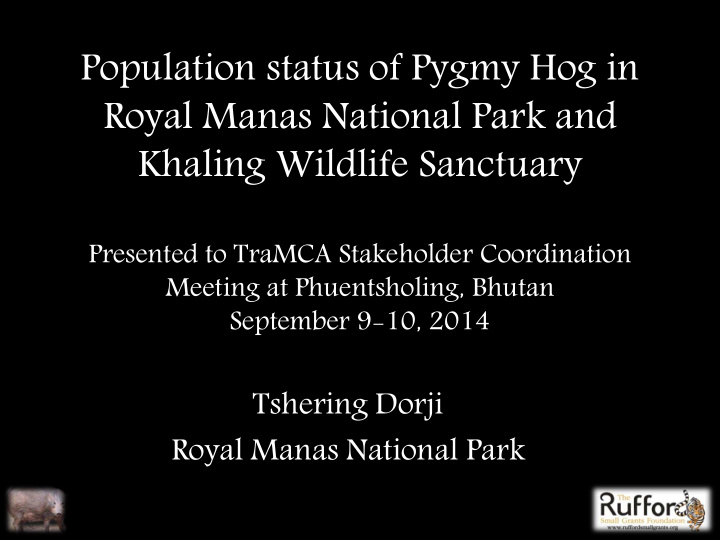



Population status of Pygmy Hog in Royal Manas National Park and Khaling Wildlife Sanctuary Presented to TraMCA Stakeholder Coordination Meeting at Phuentsholing, Bhutan September 9-10, 2014 Tshering Dorji Royal Manas National Park
Rationale of the study • RMNP and KWS are the only protected areas in Bhutan historically known for occurrence of pygmy hog • Evidence to show current occurrence is poor or lacking in both the areas • Probable extinction of pygmy hog indicated by IUCN • Validation of species list in both the areas felt necessary
Objectives of the study • To generate baseline information to form scientific basis to validating listing and/or delisting from two areas • To suggest possible reasons for decline of this species from the study areas • To explore potential habitat for restoration of this species in its historical range
Study Areas
Activities and Methods • Presence – absence survey – Sign survey – Camera trap survey • Population and distribution assessment – Camera trap – Questionnaire interview • Habitat and threat assessment – Habitat (20 m x 20 m) plot – Direct observation
Our preliminary findings • Presence-absence – In both the study areas, both signs and direct observation by people are lacking – In KWS, the most recent sighting by local people is five years before – In RMNP, no picture evidence from camera traps
Population and distribution • Based on the availability of suitable habitats, the chances of occurrence is more likely in RMNP than KWS (See map) • Local people in KWS revealed that most recent sighting in 5 to 10 years before • The decline in population may be due to loss of grassland in RMNP • In KWS, there has been significant loss of agriculture land
Landuse 1994 Landuse 2010
Habitat and threats Possible Threats • Land use change • Uncontrolled fire • Extreme climatic conditions
Recommendation to park Management • Comprehensive survey within its historical range • Initiate population recovery plan • Map potential habitat • Explore for substantial financial resources to save this species from local extinction
Thank you!
Recommend
More recommend